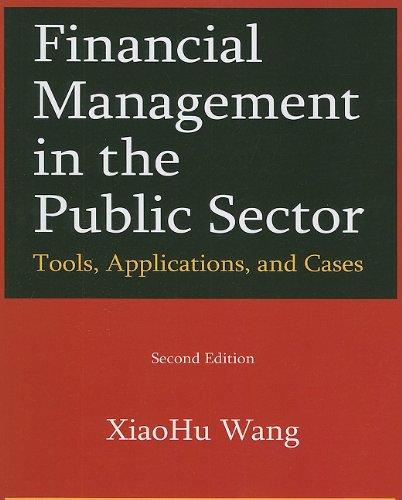23. When watching for suspicious activity associated with covered product transactions, an insurance producer would correctly consider all of the following to be red flags EXCEPT: a. The customer does not know the beneficiary's date of birth. b. The customer shows no interest in the investment performance of an insurance product but much concern about its withdrawals and surrender provisions. c. The applicant exhibits a lack of concern for policy fees and charges. d. The applicant is rated and shows casual disregard for the higher premiums of a rated policy. 24. In the course of transacting business, Producer Ellen might reasonably consider all of the following to be suspicious EXCEPT: a. a request by the owner of a participating whole life policy to change her dividend options b. a request by a life insurance applicant to pay a sizeable initial deposit using a third-party check c. an applicant for a life insurance policy who repeatedly asks about early surrender charges and the free-look privilege d. an applicant for life insurance who wants to pay the monthly $2,500 premium in money orders 25. All of the following transactions might indicate a money laundering red flag EXCEPT: a. Premiums are paid through wire transfers from off-shore banks. b. The customer sets up a recurring draft program to pay premiums quarterly from his checking account c. A producer doing business in a neighboring state has a high sales rate but an unusually low policy persistency rate. d. The customer frequently overpays premiums and asks that the overpayments be returned. 17. Daryl, a life insurance producer, noticed that the applicant for a high premium universal life insurance policy became very tense when completing the customer identification portion of the application. Also, the driver's license did not match the address written on the application, which the applicant explained was due to a recent move. Observing his company's AML program, which is modeled after FinCEN rules, Daryl should first do what? a. discuss the concerns with the customer and ask for an explanation b. discuss the concerns with a fellow producer before escalating the issue to the AML compliance department c. report the suspicions to his manager and let the manager decide if it should be escalated to the company's AML compliance department od report the suspicions directly to FinCEN 18. Phil is an insurance agent. In the course of his business, he might reasonably consider all of the following to be suspicious activities EXCEPT: a. A potential life insurance customer repeatedly asks about early surrender charges and the free-look privilege. ob. A life insurance applicant asks to pay a sizeable initial deposit using a third-party check. c. An existing customer asks to change the dividend option of her participating whole life policy to the paid-up additions option. od. An applicant for life insurance wants to pay the initial $2,500 premium with a cashier's check and future premiums via wire transfer. 23. When watching for suspicious activity associated with covered product transactions, an insurance producer would correctly consider all of the following to be red flags EXCEPT: a. The customer does not know the beneficiary's date of birth. b. The customer shows no interest in the investment performance of an insurance product but much concern about its withdrawals and surrender provisions. c. The applicant exhibits a lack of concern for policy fees and charges. d. The applicant is rated and shows casual disregard for the higher premiums of a rated policy. 24. In the course of transacting business, Producer Ellen might reasonably consider all of the following to be suspicious EXCEPT: a. a request by the owner of a participating whole life policy to change her dividend options b. a request by a life insurance applicant to pay a sizeable initial deposit using a third-party check c. an applicant for a life insurance policy who repeatedly asks about early surrender charges and the free-look privilege d. an applicant for life insurance who wants to pay the monthly $2,500 premium in money orders 25. All of the following transactions might indicate a money laundering red flag EXCEPT: a. Premiums are paid through wire transfers from off-shore banks. b. The customer sets up a recurring draft program to pay premiums quarterly from his checking account c. A producer doing business in a neighboring state has a high sales rate but an unusually low policy persistency rate. d. The customer frequently overpays premiums and asks that the overpayments be returned. 17. Daryl, a life insurance producer, noticed that the applicant for a high premium universal life insurance policy became very tense when completing the customer identification portion of the application. Also, the driver's license did not match the address written on the application, which the applicant explained was due to a recent move. Observing his company's AML program, which is modeled after FinCEN rules, Daryl should first do what? a. discuss the concerns with the customer and ask for an explanation b. discuss the concerns with a fellow producer before escalating the issue to the AML compliance department c. report the suspicions to his manager and let the manager decide if it should be escalated to the company's AML compliance department od report the suspicions directly to FinCEN 18. Phil is an insurance agent. In the course of his business, he might reasonably consider all of the following to be suspicious activities EXCEPT: a. A potential life insurance customer repeatedly asks about early surrender charges and the free-look privilege. ob. A life insurance applicant asks to pay a sizeable initial deposit using a third-party check. c. An existing customer asks to change the dividend option of her participating whole life policy to the paid-up additions option. od. An applicant for life insurance wants to pay the initial $2,500 premium with a cashier's check and future premiums via wire transfer









